Understanding Dental Midline, Midline Discrepancy, and Misplaced Midline: Causes, Impacts, and Treatments
Dr. Ryan Redford and Dr. Michael Burke
At Burke & Redford Orthodontists, we understand that parents want the best for their children, especially when it comes to their oral health. Located in Temecula and Lake Elsinore, California, our office has been one of the most referred to orthodontic practices in the Inland Empire for over 30 years.
In this article we will explore the terms dental midline, midline discrepancy, and misplaced midline—three aspects of orthodontics treatment that when understood can help to better understand your child or teenager’s smile.
What is the Dental Midline?
– The dental midline is an imaginary vertical line that runs between the two upper and lower front teeth (central incisors).
– Ideally, this line should align with the center of the face, creating a symmetrical and esthetically pleasing smile.
– Proper alignment of the dental midline is crucial for both functional and cosmetic reasons.

Understanding Midline Discrepancy
– Definition: A midline discrepancy occurs when the dental midline of the upper teeth does not align with the midline of the lower teeth or the center of the face (or vice versa).
– Causes: This condition can be caused by various factors, including genetic influences, early loss of baby teeth, missing teeth, extra teeth, misshapen teeth, habits like thumb sucking, or trauma.
– Impact: Midline discrepancies can affect the overall appearance of the smile and may lead to bite problems and other dental issues.
Misplaced Midline Explained
– Definition: A misplaced midline is another term for midline discrepancy. It refers to the misalignment of the dental midline.
– Causes: Like midline discrepancy, a misplaced midline can result from crowding, missing teeth, jaw misalignment, or other factors.
– Effects: This condition can cause esthetic concerns and functional problems, impacting your child’s self-esteem and oral health.
Common Causes and Contributing Factors
– Genetics: Inherited traits from parents.
– Early Loss of Primary Teeth: Leads to space issues or problems with eruption of permanent teeth.
– Thumb Sucking: Affects teeth alignment.
– Tongue Thrusting: Alters the position of teeth.
– Trauma: Injury to teeth or jaw.
– Jaw Size Discrepancies: Differences in upper and lower jaw sizes.
Impact of Midline Discrepancies on Oral Health
Functional Implications:
– Difficulty in chewing and biting.
– Increased risk of tooth wear.
Esthetic Concerns:
– An uneven or asymmetric smile can affect self-confidence.
Speech Issues:
– Misalignment may cause speech difficulties.
Diagnosis and Evaluation
Clinical Examination: Orthodontists will perform a thorough examination of your child’s teeth and jaw.
Imaging Techniques: X-rays and CBCT scans help in detailed assessment.
Early Detection: Interceptive orthodontics is important for effective treatment planning. Catching problems early so they can be treated more effectively and conservatively can be critical.
Treatment Options for Midline Discrepancies
Self-Ligating Braces
Self-ligating braces are a modern orthodontic treatment option that offers several advantages over traditional braces. At Burke & Redford Orthodontists, we provide various types of self-ligating braces, including ceramic, metal, and Damon braces.
Ceramic Self-Ligating Braces
Material: Made from clear or tooth-colored materials, making them less noticeable.
Advantages: Esthetic appeal and effective in treating midline discrepancies.
Care: Regular brushing and flossing, avoiding foods that can stain the brackets.
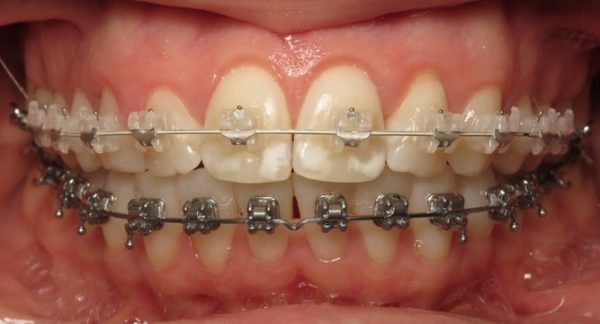
Types of Malocclusions Treated:
– Crowding
– Spacing
– Misaligned teeth
– Crossbite
Metal Self-Ligating Braces
– Material: Made from high-grade stainless steel, known for durability.
– Advantages: Strong and effective for more severe malocclusions.
– Care: Requires diligent oral hygiene to prevent plaque buildup.
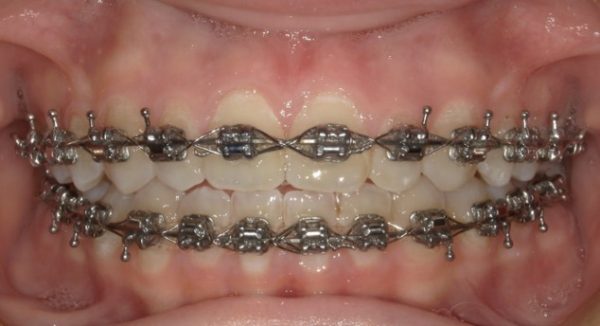
Types of Malocclusions Treated:
– Severe crowding
– Overbite
– Underbite
– Midline discrepancy
Damon Self-Ligating Braces
– Material: Available in both metal and clear options.
– Care: Like other braces, with emphasis on avoiding hard and sticky foods.

Types of Malocclusions Treated:
– Complex crowding
Orthodontic Appliances Used in Conjunction with Braces
At Burke & Redford Orthodontists, we often use additional appliances to enhance the effectiveness of self-ligating braces. Here are some common appliances and their uses:
Lower Lingual Holding Arch
– Purpose: Maintains space in the lower arch.
– Used For: Preventing tooth movement after early loss of baby teeth, limiting the amount of lower jaw crowding to help avoid extraction of permanent teeth.
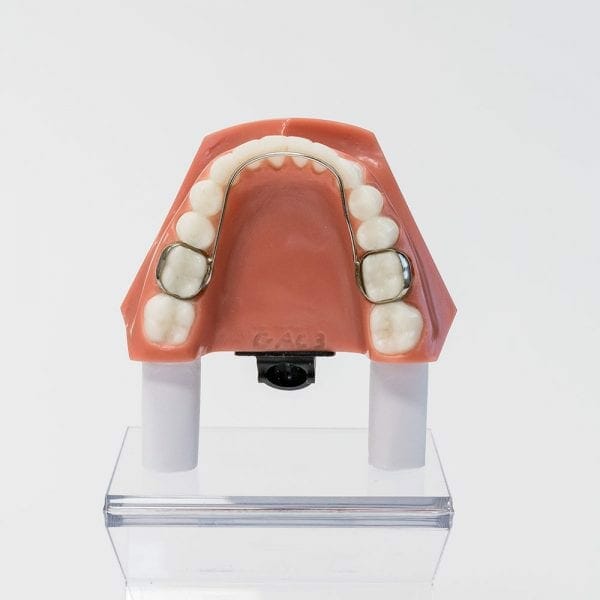
Types of Malocclusions Treated:
– Space maintenance
– Prevention of lower arch crowding
Nance Arch
– Purpose: Maintains space in the upper arch.
– Used For: Holding space after the premature loss of upper baby teeth, limiting the amount of upper jaw crowding to help avoid extraction of permanent teeth.

Types of Malocclusions Treated:
– Prevents molar drift
– Aids in the correction of upper arch alignment
Banded and Bonded Expanders
Banded Expander
– Purpose: Widens the upper jaw to correct crossbites.
– Used For: Creating space for proper tooth and jaw alignment.

– Malocclusions Treated:
– Crossbite
– Crowding
– Upper jaw constriction
Bonded Expander
– Purpose: Similar to the banded expander but bonded directly to the teeth.
– Used For: Providing stability during upper jaw expansion.

– Malocclusions Treated:
– Severe crossbite
– Anterior crossbite
– Arch width discrepancies
Quad-Helix Appliance
– Purpose: Expands the upper arch and corrects posterior crossbites.
– Used For: Gradual and continuous expansion.
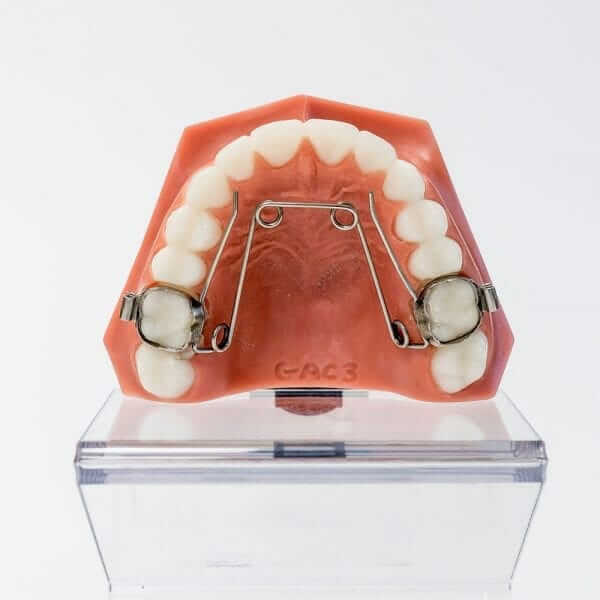
Types of Malocclusions Treated:
– Crossbite
– Crowding
Pendulum Appliance
– Purpose: Moves molars backward to create space.
– Used For: Correcting Class II malocclusions.
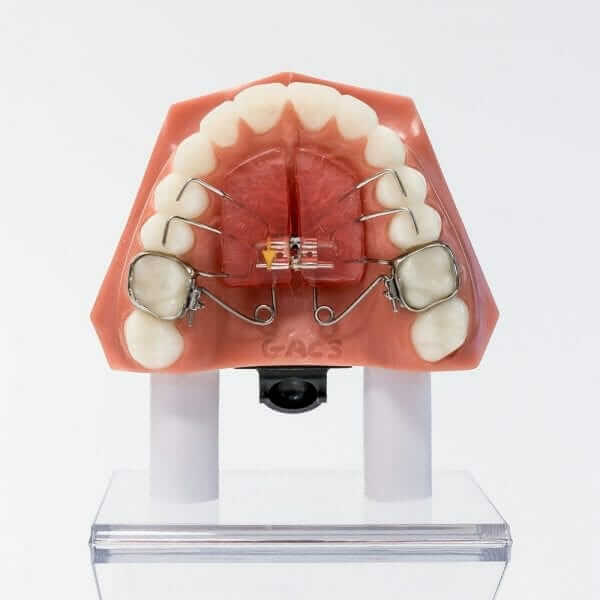
Types of Malocclusions Treated:
– Class II malocclusion
– Crowding
Herbst Appliance
– Purpose: Corrects jaw discrepancies by advancing the lower jaw and teeth.
– Used For: Treating Class II malocclusions.
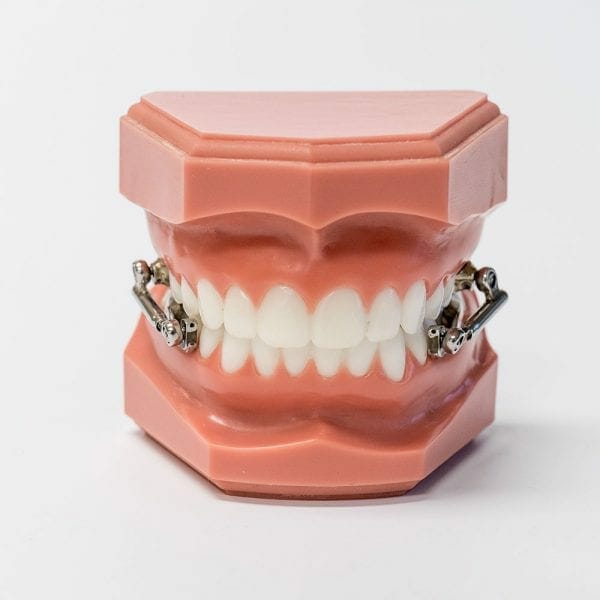
Types of Malocclusions Treated:
– Class II malocclusion
– Mandibular retrusion
Carriere Distalizer
– Purpose: Shifts upper and lower side teeth to correct overbites.
– Used For: Pre-treatment before braces or Invisalign.

Types of Malocclusions Treated:
– Class II malocclusion
– Overbite
Habit Appliance
– Purpose: Helps stop harmful oral habits like thumb sucking.
– Used For: Preventing further dental issues.
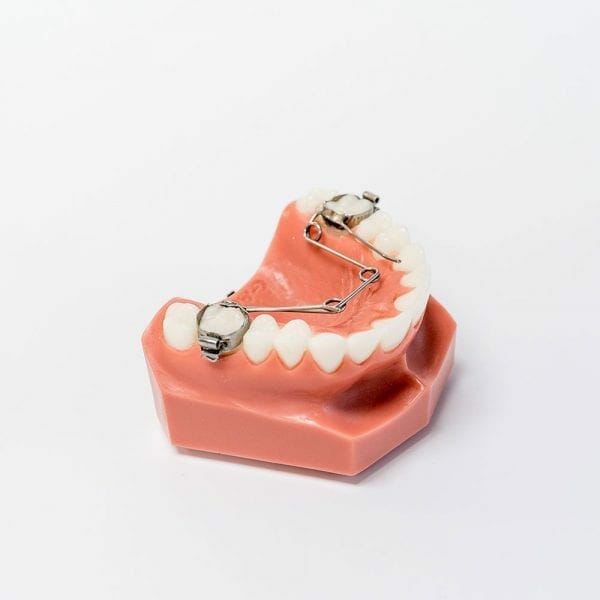
Types of Malocclusions Treated:
– Open bite
– Protrusion caused by thumb sucking
Reverse Pull Headgear
– Purpose: Corrects underbites by pulling the upper jaw forward.
– Used For: Treating Class III malocclusions.
Types of Malocclusions Treated:
– Class III malocclusion
– Maxillary deficiency
Combining Treatments for Optimal Results
Combining self-ligating braces with specific appliances allows for a tailored approach to treating midline discrepancies and other malocclusions. For example:
– Using a Banded Expander with Damon Braces: Ideal for children with narrow upper jaws and severe crowding.
– Combining Herbst Appliance with Ceramic Braces: Effective for teenagers needing both severe overbite correction and esthetic appeal.
– Integrating Carriere Distalizer with Invisalign: Suitable for teens and adults requiring pre-alignment before clear aligner treatment.
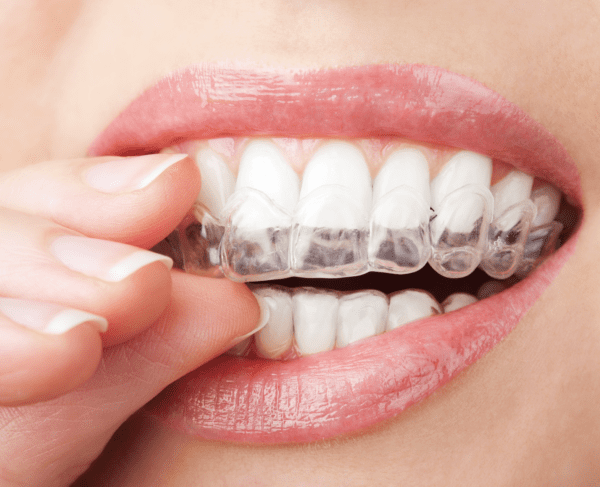
Importance of an Early Orthodontic Consultation
Early evaluation by Dr. Ryan Redford at Burke & Redford Orthodontists can identify potential issues before they become severe. This proactive approach:
– Helps with timely intervention.
– Reduces the complexity of future treatments.
– Ensures better outcomes for children and teenagers.
At Burke & Redford Orthodontists, we provide comprehensive orthodontic care for your child. Understanding dental midline, midline discrepancy, and misplaced midline is crucial for achieving a balanced and beautiful smile.
If you have concerns about your child’s teeth, schedule an appointment with Dr. Ryan Redford by calling (951) 699-8011, Monday through Thursday, or completing the orthodontic consultation request form through our website anytime.
Our experienced orthodontists in Temecula and second orthodontist office in Lake Elsinore, California, is here to help your child and teenager smile confidently.